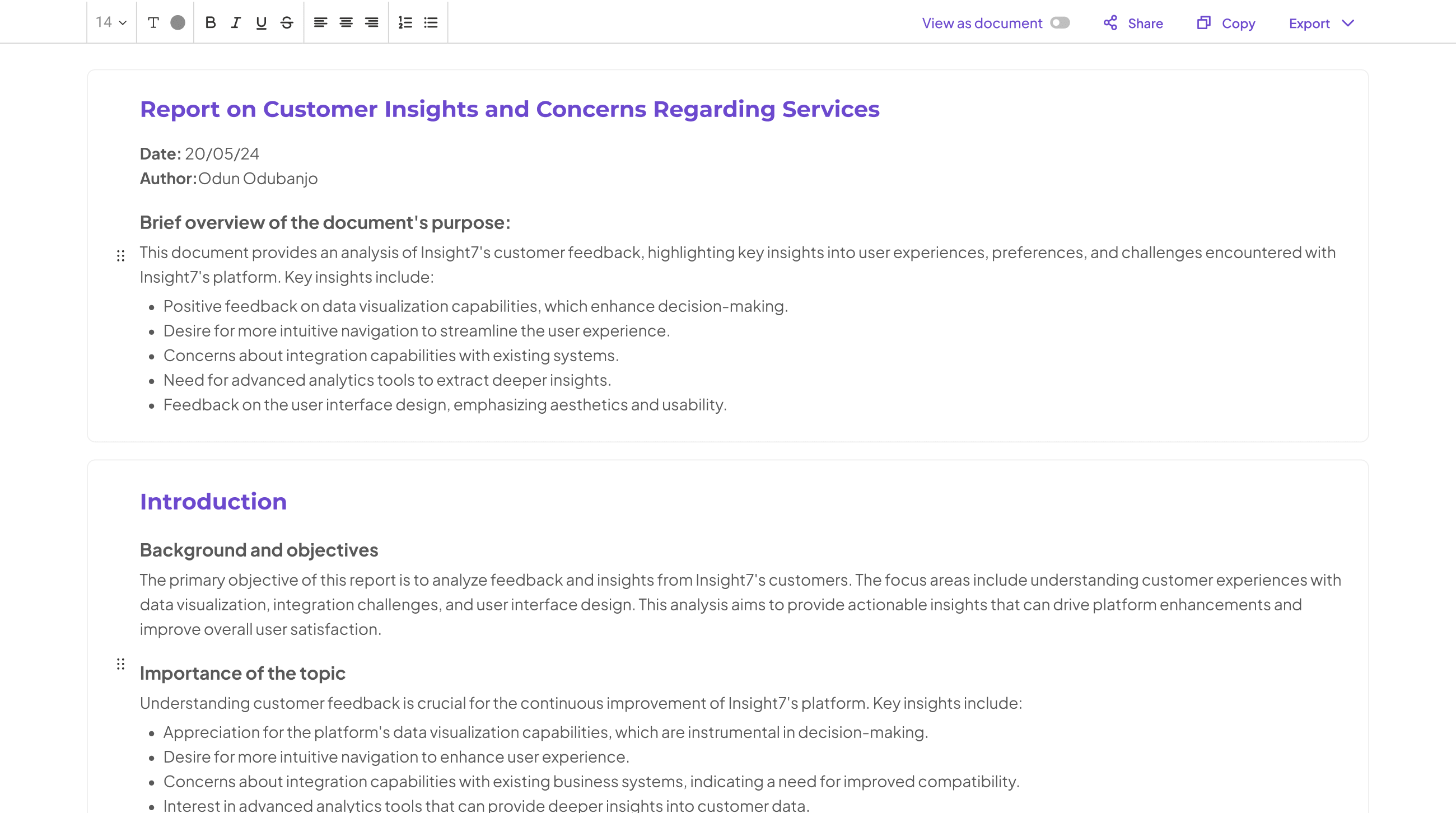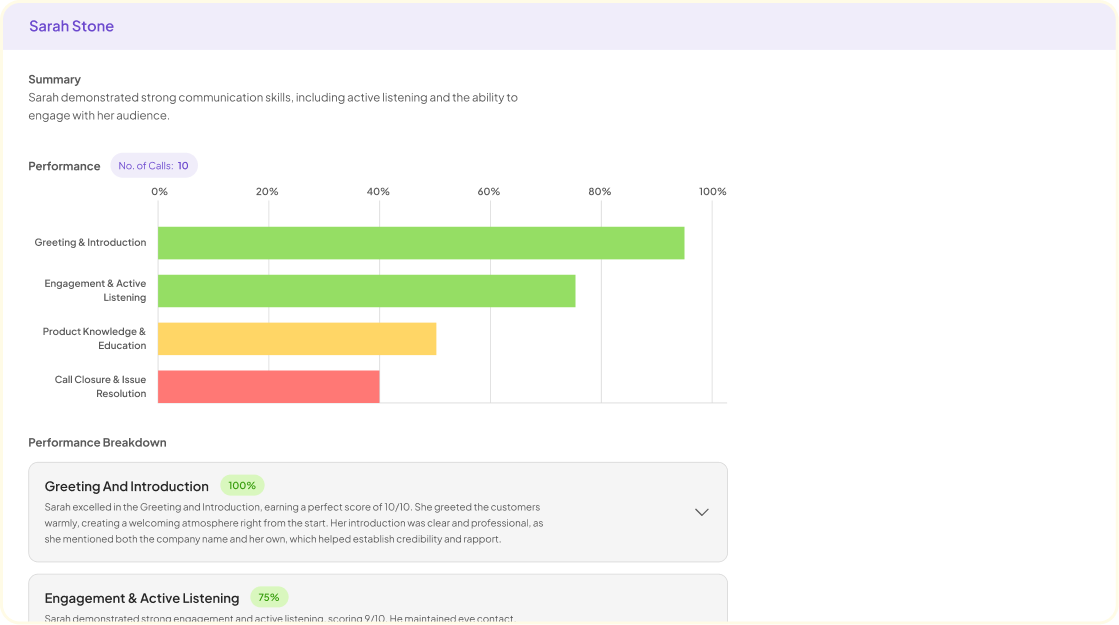The Research Report Structure serves as a crucial framework for presenting findings in a clear and organized manner. Understanding this structure is essential for both researchers and readers who rely on these reports for insights. Each component of a research report contributes to creating a narrative that communicates the significance of the data and findings.
As we explore the various sections within a research report, we will uncover the purpose of each part. Grasping the nuances of the research report structure enables effective communication of information, helping to drive informed decisions. By examining key components like the introduction, methodology, findings, and conclusion, you will gain a comprehensive understanding of how to analyze and interpret research reports effectively.
Transcribe & extract insights from interviews. At Scale.

Main Components of a Research Report Structure
A well-structured research report serves as the backbone of any effective study. It’s essential to understand the main components of a research report structure to convey findings clearly and convincingly. Typically, a research report begins with an introduction, which outlines the research problem and its significance. This section sets the tone by providing background context, including relevant literature and what the study intends to accomplish.
Following the introduction, the methodology section delineates the research design, data collection methods, and analytical techniques employed. Next, results present the findings without bias, while the discussion interprets these results in light of the research question. Finally, the conclusion summarizes the key insights and may suggest areas for further research. Each component plays a critical role in ensuring that the overall research report structure communicates its messages effectively and serves the intended audience well.
Title Page and Abstract: A Concise Overview
The title page is a crucial element of a research report, as it sets the stage for everything that follows. It typically includes the title of the report, the author’s name, and their affiliation. This page should be clear and professional, adhering to any specified formatting guidelines. A well-crafted title page not only presents essential information but also invites readers to engage with the content of the report.
The abstract serves as a succinct summary of the research report, providing an overview of the key objectives, methods, results, and conclusions. It allows readers to quickly grasp the report’s essence and decide whether to explore further. Effective abstracts are concise yet informative, typically ranging from 150 to 250 words. Together, the title page and abstract form a pivotal part of the research report structure, guiding readers while embedding the details of the work to come.
Introduction Section: Setting the Stage for Research
Every great research endeavor begins with a well-structured plan, effectively showcasing its intentions. The introduction section plays a pivotal role in setting the stage for research by capturing the audience’s interest and establishing the study’s significance. This foundational part not only outlines the research context but also clarifies the purpose, methodology, and anticipated outcomes.
By employing a clear and concise Research Report Structure, researchers can guide readers through the complexities of their work. A well-crafted introduction lays the groundwork for subsequent sections, ensuring that the audience understands the research’s relevance. It serves as an invitation to explore the nuances of the findings, encouraging deeper engagement with the report.
Generate Detailed Reports from Your Qualitative Data in Minutes.
Detailed Examination of the Research Report Structure
Understanding the Research Report Structure requires examining several essential components. The research report typically includes an introduction, literature review, methodology, results, discussion, and conclusion. Each section plays a crucial role in conveying the research findings clearly and effectively.
The introduction sets the stage by providing background information and outlining the research questions. The literature review summarizes existing studies to contextualize the research. The methodology section describes the approach taken to gather and analyze data. Following this, the results section presents the findings succinctly. The discussion interprets the results, exploring their implications and relevance. Finally, the conclusion encapsulates the research’s significance, offering recommendations for further study or practical applications. Understanding these components is fundamental for anyone engaging with or producing research reports.
Methodology: Blueprint of the Study
The methodology section serves as the backbone of your research report structure, outlining the systematic approach taken to gather and analyze data. It details the research design, which may include qualitative or quantitative methods tailored to answer specific research questions. Researchers should explain their rationale for choosing particular methods, ensuring clarity and transparency for readers.
Additionally, this section should encompass sampling techniques, data collection procedures, and analytical frameworks used. Highlighting ethical considerations and limitations is essential; it positions the research within a credible context. By doing so, you build trust with your audience and foster a deeper understanding of the research outcomes, ensuring the findings are perceived as reliable and valid. Crafting a thorough methodology not only supports the integrity of your research but also enhances the overall impact of the report.
Results and Discussion: Unraveling the Findings
The Results and Discussion section provides a critical analysis of the research findings and their implications. Here, researchers synthesize their results, offering insights into patterns and key themes that emerge from the data collected. This part of the Research Report Structure bridges the gap between raw data and meaningful conclusions, enabling a comprehensive understanding of the study’s significance.
Firstly, it is essential to highlight the significant findings, often presented through visual aids such as charts or graphs. This visual representation enhances comprehension and allows for easier detection of trends. Secondly, researchers must interpret these findings in the context of existing literature, drawing comparisons that establish the study’s place within the broader field. Thirdly, discussing potential limitations is crucial. Addressing weaknesses strengthens the report’s credibility and informs future research. Lastly, providing recommendations based on the findings encourages practical applications and further inquiry, thus maximizing the impact of the research.
Conclusion: Synthesizing the Research Report Structure
In conclusion, synthesizing the research report structure involves weaving together the various components we discussed throughout this report. Each section, from introduction to methodology, plays a crucial role in communicating findings effectively. By understanding how these components interact, researchers can create a cohesive narrative that enhances comprehension and engagement.
Transcribe & extract insights from interviews. At Scale.

A well-structured research report not only presents data but also tells a story that guides the reader. Clear organization allows for easier navigation of key insights, ensuring that essential messages resonate. Ultimately, mastering the details of research report structure helps to convey information in a powerful, impactful way, making the research both accessible and actionable for its audience.


